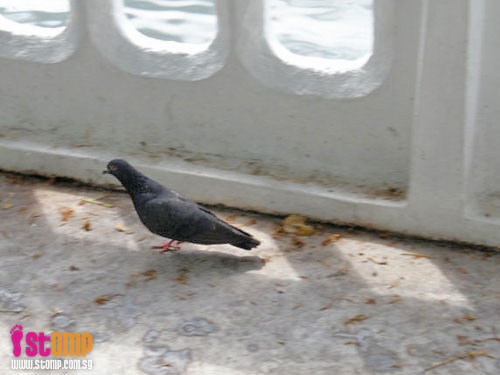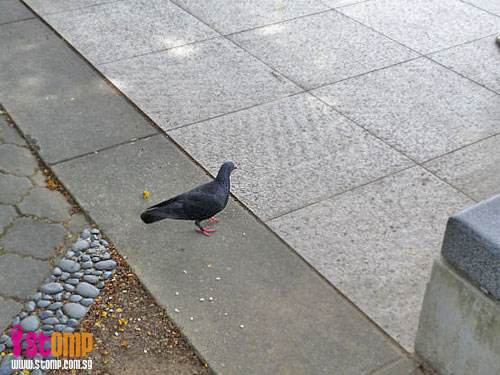
STOMPer Shutterbug feels that it is a pity this promenade at Queen Elizabeth Walk is overrun with birds and their droppings everywhere.
He says:
"These pictures were taken at the promenade at Queen Elizabeth Walk.
"Once a beautiful park, the beauty of this park has been totally ruined.
"The whole place is now invaded by our winged friends who choose to make this place their unnatural habitat.
"The floor, the benches and the parapets are all stained with bird droppings.
"You see hordes of mynahs, pigeons, crows and other pests.
"A crow with a red eye is a ferocious bird as it attacks children when it is in a bad mood.
"If ever there is a bird flu, this place will be most vulnerable.
"As this place is overrun with birds, perhaps the NParks and NEA could think of ways to reduce the bird population."




While I understand that there might be a need to control bird populations from time to time, it is absolute nonsense to claim that crows with red eyes are "ferocious".
First of all, crows don't have red eyes. Secondly, it's extremely foolish to assume that one can judge the temperament of a bird based on eye colour alone. And how do you tell whether a crow is in a bad mood or not? I'm not quite sure if I follow this person's chain of reasoning. If a crow with red eyes (which to my knowledge, doesn't exist) is in a bad mood (how we can tell, I do not know), it will attack children, and hence, it is considered to be ferocious.
...What?
I admit that urban birds such as the house crow (Corvus splendens), feral pigeon (Columba livia), Javan myna (Acridotheres javanicus), common myna (Acridotheres tristis) and Eurasian tree sparrow (Passer montanus) do not have many fans, even among birdwatchers, and that these birds might possibly have a negative impact on populations of other bird species, but it still doesn't warrant such baseless scare-mongering and exaggeration.
I'm not sure what this person means when he says that this area is an "unnatural habitat" for these birds. Do enlighten us as to what ought to be so-called natural habitat for these birds. As commensal species, these birds are doing so well simply because they have adapted to living alongside us, exploiting the ecological niches we have created in our urban landscapes. In fact, species such as the house crow and Eurasian tree sparrow are so specialised that they are apparently found only close to areas of human activity.
And how ironic that he refers to the birds as "our winged friends" in one sentence near the beginning, and then ends off with a not very subtle hint to cull the birds.